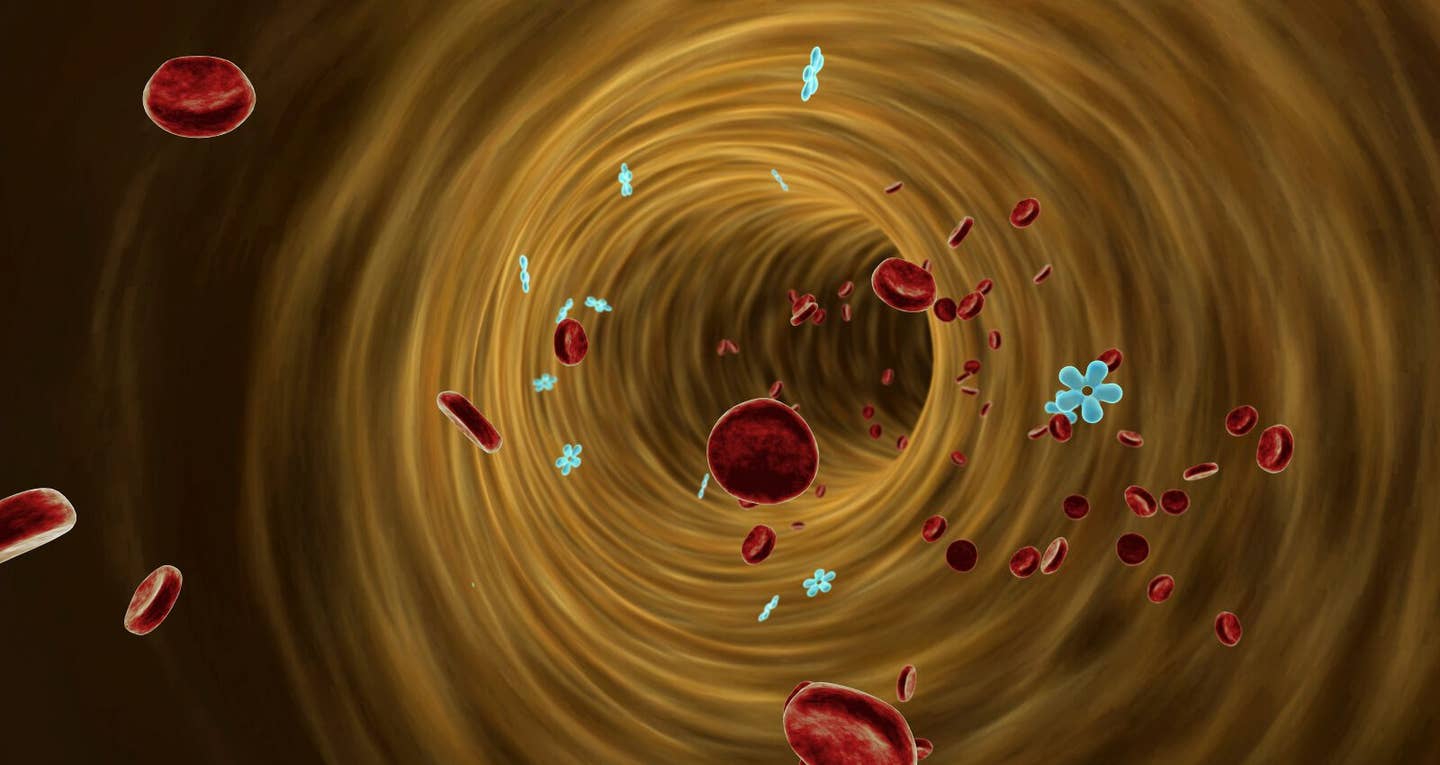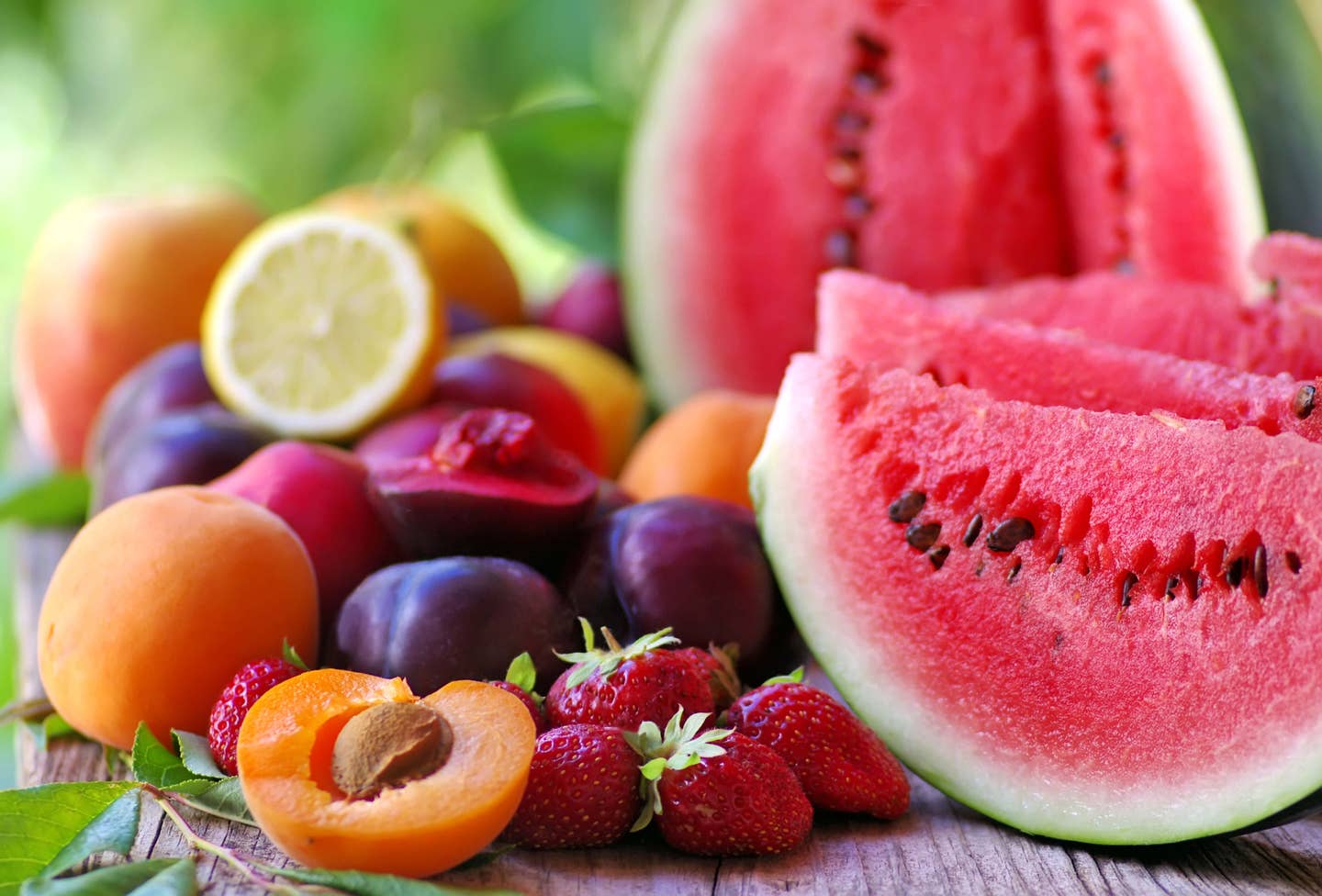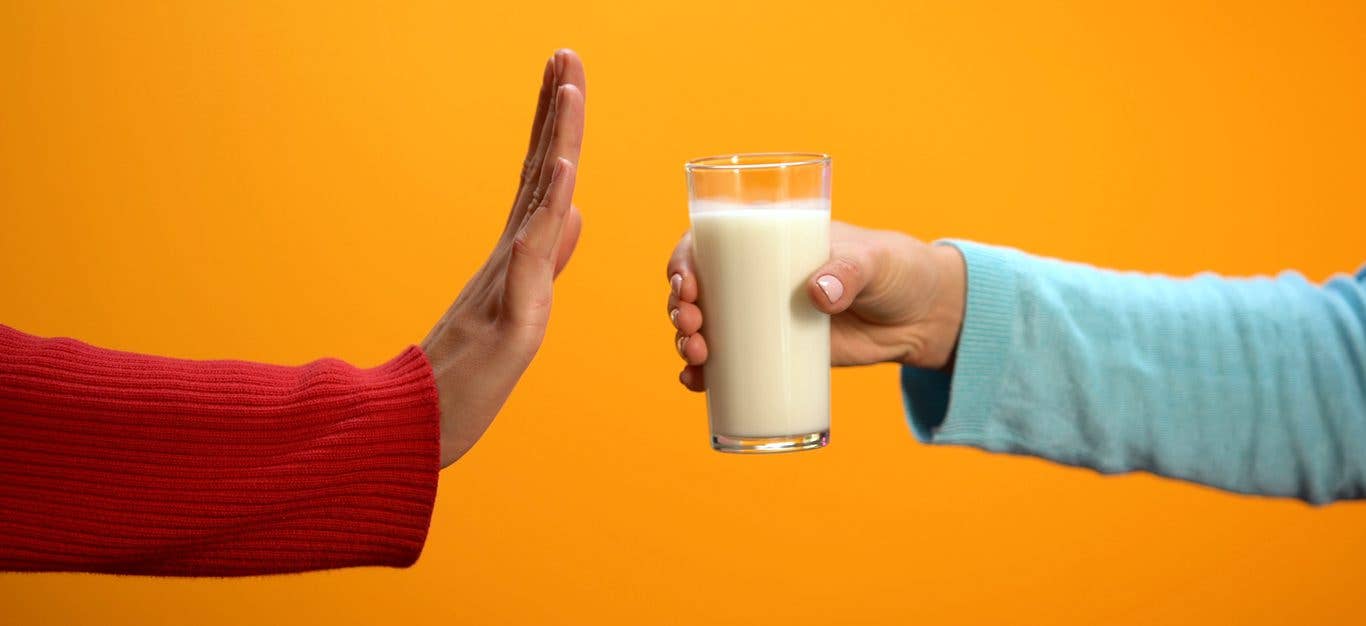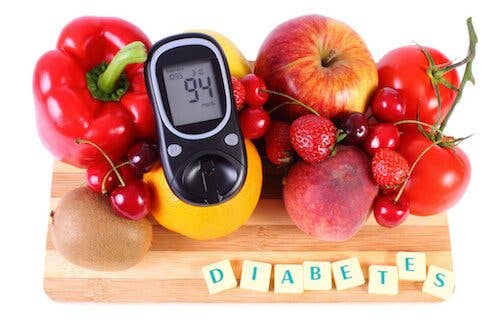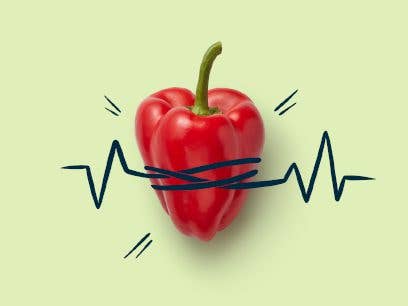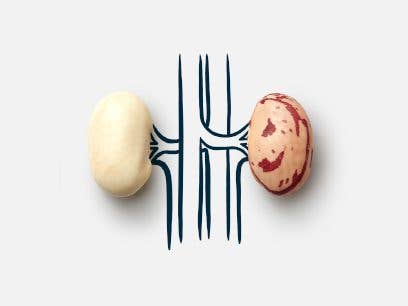HEALTH TOPICS
Diabetes and Diet: Here’s What You Need to Know
Around 37 million Americans—roughly 1 in 10—have some form of diabetes, and another 96 million have prediabetes. Read on for an overview of how diabetes works; how Type 1 differs from Type 2; common symptoms; and how you can prevent, manage, or (in the case of Type 2 diabetes) even reverse it.
What Is Diabetes?
Diabetes, or diabetes mellitus, is a group of chronic conditions in which the body is unable to efficiently convert food into energy.
When we eat, our body breaks food down into glucose (sugar), which is released into our bloodstream to be absorbed by cells as needed. Insulin, a hormone secreted by the pancreas, helps glucose make its way into cells.
In people with diabetes, the pancreas either doesn’t produce enough insulin or the body is unable to properly use insulin. This leads to too much sugar in the bloodstream, which can cause serious health problems over time.
Type 1 Diabetes vs. Type 2 Diabetes
Type 1 diabetes (T1D) is an autoimmune condition in which the pancreas produces little to no insulin. With T1D, the immune system attacks the pancreas and destroys the cells that would produce insulin. Formerly known as juvenile-onset diabetes, T1D is usually diagnosed during childhood. Type 1 is less common than Type 2 diabetes, representing about 5%–10% of total diabetes cases in the United States. However, rates have been steadily increasing in recent years. Type 1 diabetes is primarily treated with insulin, oral medications, and blood glucose monitoring. Proper nutrition can help manage symptoms and reduce complications.
Of the 37 million Americans who have diabetes, the vast majority (around 90–95 percent) have Type 2 diabetes (T2D). With this form of diabetes, the pancreas produces insulin, but cells stop responding normally to it (a process called insulin resistance). The pancreas tries to compensate by secreting more insulin into the blood. This works at first, but eventually, the pancreatic cells responsible for producing insulin become dysfunctional from the excess workload. At this point, blood glucose levels begin to rise to the diabetic range. T2D is primarily treated through lifestyle measures, though insulin and oral medications are sometimes prescribed.
Gestational Diabetes
Due to physical changes including hormonal fluctuations, some people develop diabetes while pregnant. This is known as gestational diabetes. The CDC estimates that the condition impacts as many as 10 percent of pregnancies. Around half of people who develop gestational diabetes go on to develop T2D after pregnancy. Anyone who’s pregnant should talk to their medical providers about being tested for gestational diabetes.
Causes of Type 2 Diabetes
At the core of prediabetes and Type 2 diabetes is insulin resistance: a condition in which the body’s tissues become “blind” to insulin. The precise cause of insulin resistance still isn’t fully understood, but a number of factors, both environmental and genetic, seem to contribute. One of the primary risk factors is being overweight or obese. For a fascinating deep dive on insulin resistance, see “Everything You Need to Know About Insulin Resistance and Diet.”
The Role of Fat
Scientific evidence points to fats, particularly saturated fats, as a major culprit behind insulin resistance and Type 2 diabetes. That’s because excess fat has the effect of “gumming up the locks,” preventing insulin from importing glucose into cells, as Michael Greger, MD, explains: “Fat in the bloodstream can build up inside the muscle cells, create toxic fatty breakdown products and free radicals that can block the signaling pathway process. So, no matter how much insulin we have out in our blood, it’s not able to open the glucose gates, and blood sugar levels build up in the blood.”
What About Sugar?
Because diabetes leads to elevated blood sugar, there’s a popular misconception that sugar causes diabetes. The reality is more complicated.
While diets high in added sugars have indeed been linked to an increased risk of Type 2 diabetes, there are a number of potential reasons for this link. For one, refined sugars (and other ultra-processed foods) make it easy to exceed one’s caloric needs, promoting weight gain, obesity, and a heightened risk of insulin resistance and T2D. Another possible explanation is that people who consume a lot of added sugars tend to have unhealthy overall dietary patterns or other lifestyle habits that would increase their risk for T2D.
Additionally, sugars consumed as part of whole plant foods—e.g., a piece of fruit—do not appear to increase the risk of diabetes. In fact, research suggests the opposite: A large-scale observational study found that greater consumption of whole fruits was associated with a decreased risk of Type 2 diabetes.
Diabetes Symptoms
The following symptoms can be warning signs of Type 2 diabetes, according to the American Diabetes Association.
- Urinating often
- Feeling very thirsty
- Feeling very hungry despite eating enough
- Extreme fatigue
- Blurred vision
- Cuts or bruises that are slow to heal
- Tingling, pain, or numbness in the hands or feet
If you’re experiencing any of these symptoms, let your physician know.

How to Get Tested
Two common tests used for diagnosing diabetes are the A1C test and the fasting blood glucose test.
A1C
Also known as an HbA1c test or hemoglobin A1C test, the A1C test looks at a blood sample to determine your average blood sugar over the past three months. Below are the ranges used to interpret A1C results.
| Normal | Below 5.7% |
| Prediabetes | 5.7% to 6.4% |
| Diabetes | 6.5% or above |
Source: American Diabetes Association
Fasting Blood Glucose Test
A fasting blood glucose test (or fasting blood sugar test) looks at the level of glucose in the blood. In preparation for a blood glucose test, your doctor will likely require you to not eat or drink anything (except water) for at least eight hours. Below are the ranges used to interpret fasting blood glucose tests, according to the CDC.
| Normal | 99 mg/dL or lower |
| Prediabetes | 100 to 125 mg/dL |
| Diabetes | 126 mg/dL or higher |
Complications of Diabetes
Left untreated, diabetes can pose serious health risks. Over time, persistently elevated blood sugar can damage blood vessels and impair the nerves that control the heart muscle, leading to heart disease. Other complications of diabetes include vision loss, neuropathy (nerve damage), chronic kidney disease, and poor mental health.
Diabetic ketoacidosis is another potentially serious condition: Unable to properly use glucose, the body begins breaking down fat tissue to use as fuel, creating a buildup of acids in the bloodstream. Diabetic ketoacidosis is more common in people with Type 1 diabetes than Type 2 diabetes, as people who have Type 2 diabetes still produce some insulin.
Best Foods for Preventing and Treating Type 2 Diabetes
Whole grains, fruits, vegetables, and overall plant-based eating patterns may help prevent Type 2 diabetes and improve outcomes for people who already have diabetes. Let’s take a look at the research.

Managing Type 1 Diabetes with Nutrition
Eliminating animal products and moving to a diet rich in whole and minimally processed plant foods can significantly reduce the problems created by Type 1 diabetes. Although there’s no cure for this type of diabetes, Cyrus Khambatta, PhD, who co-founded the Mastering Diabetes program with Robby Barbaro, MPH, notes that following a low-fat, WFPB lifestyle can:
- Boost insulin sensitivity and reduce insulin use by more than 40 percent within six months.
- Lead to more predictable blood glucose levels, making it easier to manage diabetes.
- Increase blood flow to tissues in the body and reduce the likelihood of diabetes-related nerve damage.
- Reduce the burden on the kidneys, decreasing the chances of developing kidney disease.
The Dangers of Low-Carb Diets
If you have diabetes, you may have been told at some point to eat a low-carb, high-fat diet, such as the ketogenic diet. While these diets can help normalize blood sugar levels in the short term, they fail to address the underlying cause of Type 2 diabetes: insulin resistance.
This is why people on high-fat diets might experience high blood glucose immediately after eating fruit, whole grains, or other carb-rich foods. “From a biological perspective, this makes perfect sense, because the more fat you eat, the less tolerant of carbohydrates your muscles and liver become,” explain Khambatta and Barbaro in their book Mastering Diabetes. But “fruit is not to blame for elevated blood glucose; it’s the high-fat foods you ate before eating fruit that makes it difficult for your muscles and liver to metabolize glucose effectively.”In the long term, high-fat, low-carb diets also increase the risk of heart disease and premature death from all causes.
Real-Life Success Stories of Type 2 Diabetes Reversal
If you’ve already been diagnosed with prediabetes or Type 2 diabetes, you can likely improve your outcomes by eating more whole plant foods and avoiding animal products and highly processed foods.
For inspiration, check out these first-person testimonials from people who reversed Type 2 diabetes after adopting a whole-food, plant-based diet.
- A Carb-Centric Diet Helped Me Recover from Type 2 Diabetes
- NYC Mayor-Elect Eric Adams on Overcoming Type 2 Diabetes with a Vegan Diet
- I Went Plant-Based for Diabetes, to Amazing Results
- Reversing Type 2 Diabetes and Dropping 100 Pounds
- I Went Plant-Based and Reversed Gestational Diabetes
- I Reversed Diabetes in 5 Months on a Plant-Based Diet
- How I Reversed Diabetes With a Vegan Diet
Ready to get started? Check outForks Meal Planner, FOK’s easy weekly meal-planning tool to keep you on a healthy plant-based path. To learn more about a whole-food, plant-based diet, visit our Plant-Based Primer.
About the Author

About the Author
Courtney Davison
Courtney Davison is Forks Over Knives’ managing editor. A writer and editor on a wide range of subjects, she co-wrote a nationally syndicated advice column from 2016 to 2018 and co-authored the 2018 book Ask Me Anything: A Year of Advice from Dear Annie. She is a longtime vegan and in her free time enjoys trying new recipes and spending quality time with her cats. Find her on LinkedIn.
SIMILAR ARTICLES
Join our mailing list
Get free recipes and the latest info on living a happy, healthy plant-based lifestyle.
By providing your email address, you consent to receive newsletter emails from Forks Over Knives. We value your privacy and will keep your email address safe. You may unsubscribe from our emails at any time.
